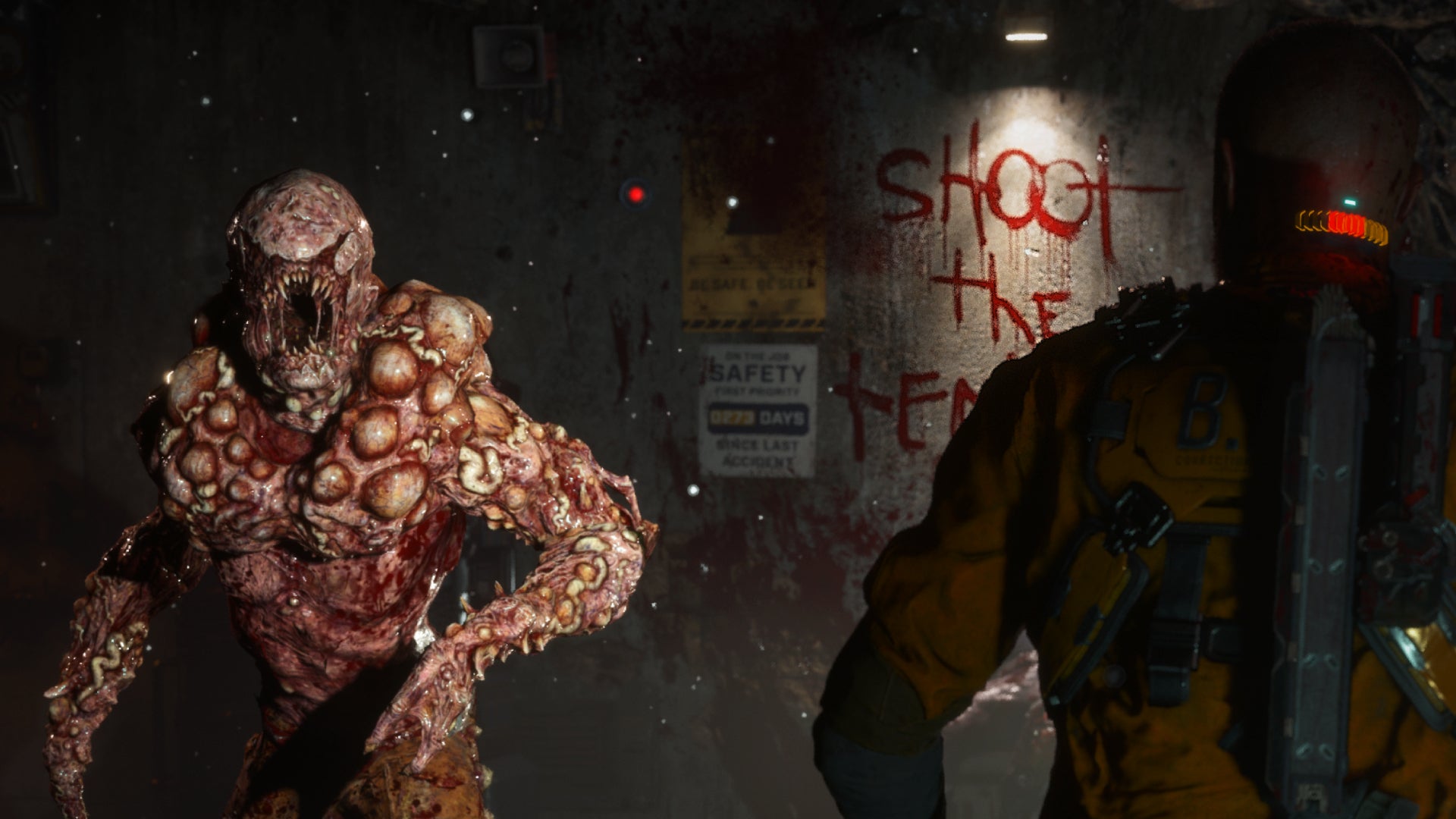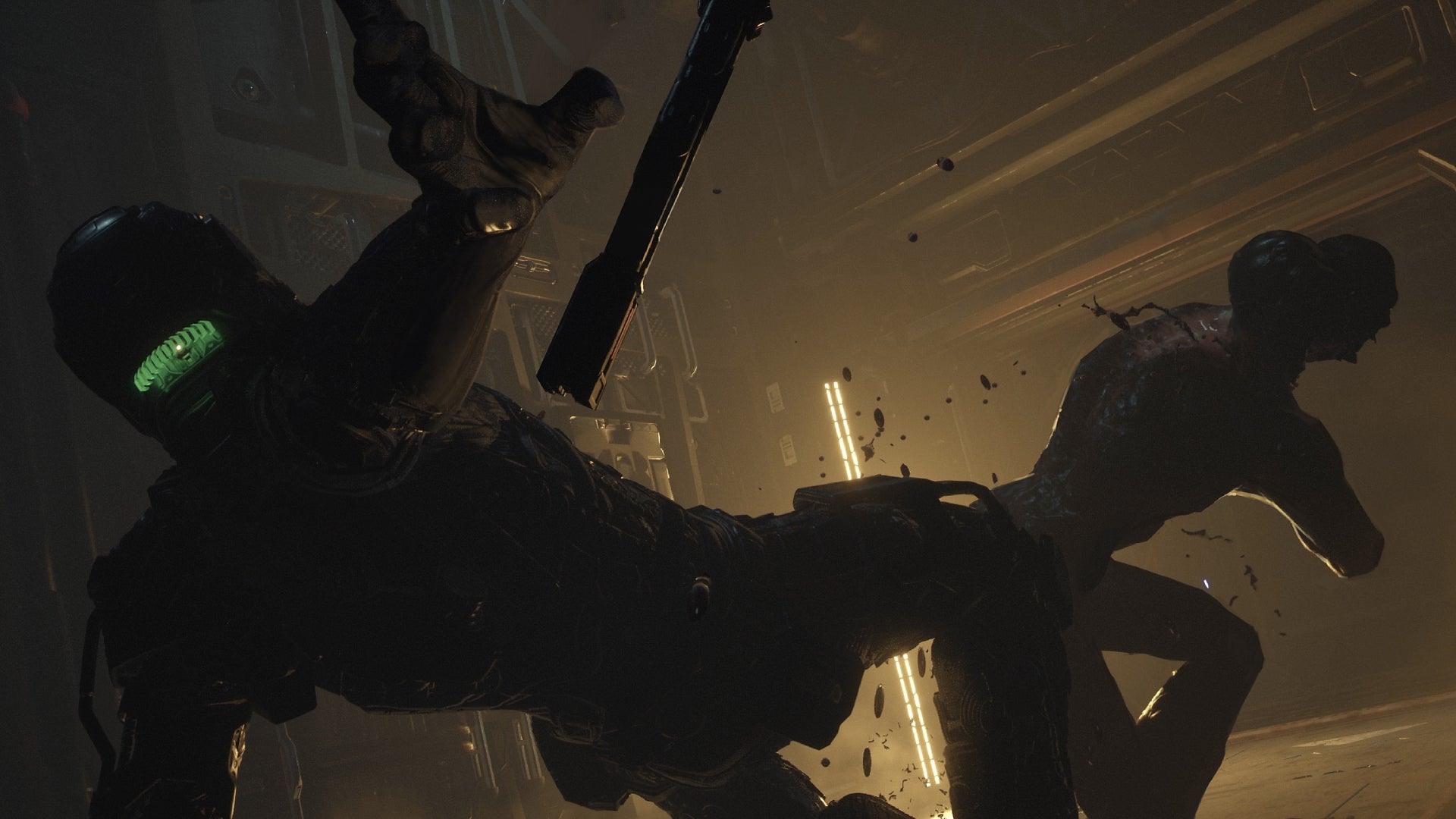Products You May Like
What scares you? Body horror? Claustrophobia? The idea of things being pushed through your eyes? Jump scares? Mediocre level design? The Callisto Protocol has it all, for better and for worse. Insistent on pushing you over the edge and making you sweat, Striking Distance Studios’ first game is overbearing; a carnival horror house trying to be a top-of-the-line escape room, Michael Bay trying to be John Carpenter. It does everything Dead Space did, sure – but once the ground is already broken, does it need breaking again?
There are differences, of course. The Callisto Protocol is prettier. The characters are more fleshed out, and there’s Hollywood talent in the space suits, too. The production values are upgraded. The combat, at first, is better. But The Callisto Protocol is trying to be too many things. It’s trying to be a thriller, it’s trying to be a psychological horror, it’s trying to be a sci-fi space opera about conspiracy and religious zealotry. It lacks the lean focus of its cinematic or video game inspirations, and often comes off like one of the shambling, shaking corpses it loves to spring on you when you think you’re enjoying a moment of safety, instead.
The developers at the fledgling Striking Distance Studios went off about the game’s ‘fear engineering’ during development – a lofty, PR-driven spiel about how the game can read your actions and emotions as you play and respond with brutal accuracy to terrify you. In practice, this means that favouring melee attacks will make enemies counter you more. Favouring your pistol will mean they lurch at you. Using your pseudo-telekinetic GRP device means they stay away from spikes on the walls. What was meant to be bleeding-edge AI feels like the superfluous enemies thrown at you in a Destiny raid. That are just a bit harder to kill.
For the first few hours, the game revels in opening up slowly; a blooming corpse flower rich with stench and menace. It’s great. It’s slow, like the developers have hitched a meat hook to your chest and are pulling you through sewers, hospital wards, and prison cells. Like a whistle-stop tour of Silent Hill, Resi, and Amnesia all in one, coaxing you forward as you hate yourself for enjoying the horror, promising something new at the end of the tunnel… something that disappointingly never materialises.
All the way through, you’re tested. As your tactics evolve and your inventory swells, you deal with more enemies – creatures that evolve with you, watch you from the vents and learn your moves and your motivations. The whole game is about evolution, after all: the evolution of man, the evolution of horror, the evolution of Glen Schofield from Call of Duty kingpin to horror auteur. Except none of it really comes off, does it? Man never evolves, because these hideous mutations get in the way. Horror never really becomes elevated, because it’s so obsessed with paying its dues to what’s come before. And Schofield, it seems, is struggling to leave Call of Duty behind.
The fingerprints of Sledgehammer Games are all over this; thin corridors, scripted encounters, the illusion of choice. Labyrinthine paths through domed conservatories convince you that you’re playing the game your way, but really you’re just moving predictably through a flowchart before the next sequence, where you’re sliding down a sluice or running away from something exploding again. It worked for Dead Space because of the nature of its world, the realisation of the Ishimura, and the insidious threat of the Marker – The Callisto Protocol has none of that. Just a spreadsheet of horror references, an all-you-can-eat buffet of gruesome death animations to gorge on, and a spoon to feed you with.

The combat is as prescribed. I like the intense, forehead-to-forehead melee of The Callisto Protocol, but I can see why plenty won’t; an over-reliance on timing, on making you duck and dive and respond in kind, is only partly mitigated by the satisfaction of blowing a mutant’s head off with your pistol at the last second. The GRP – a wonderful realisation of physics in a game as stompy and over-the-shoulder as this – feels neutered and limp, even when at its most powerful. When you first pick it up, you think about Half Life’s grav gun and the terrors of Ravenholm – and the whole logging complex of the game probably wants you to feel like that, too. But by reminding you of some of gaming’s best horror action, The Callisto Protocol just reminds you how milquetoast it is in comparison. And don’t get me started on the forced, insta-kill stealth sections that kill all momentum and mute any tension that might have just started to bubble up.

This isn’t to say there isn’t a good game oozing within the sticky flesh of this Frankenstein, though; it just feels like it’s not what Striking Distance wanted it to be. It’s not the next step in horror gaming, the evolution of Dead Space, or a proposition unlike anything you’ve seen before – it’s the opposite. An amalgam, less than the sum of its parts, whose main focus becomes overwrought and frustrating by the time you’re halfway through its short run-time. The scariest thing about The Callisto Protocol, sadly, is all the potential that’s been wasted on a small moon in Jupiter’s orbit.
